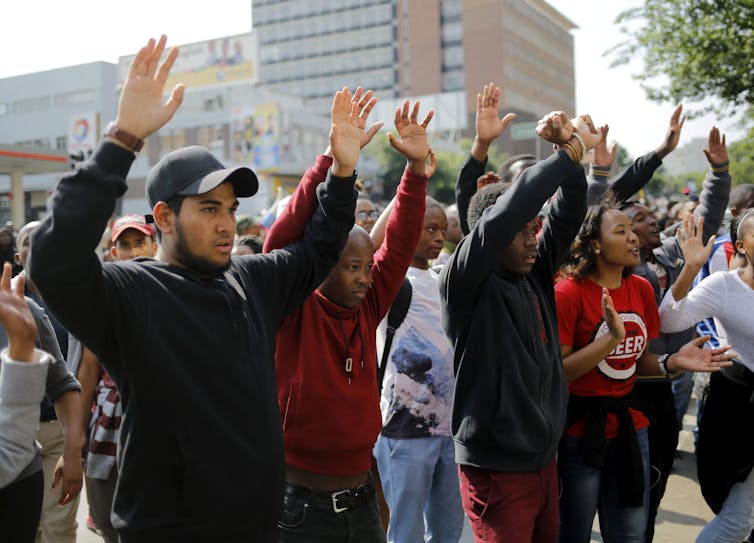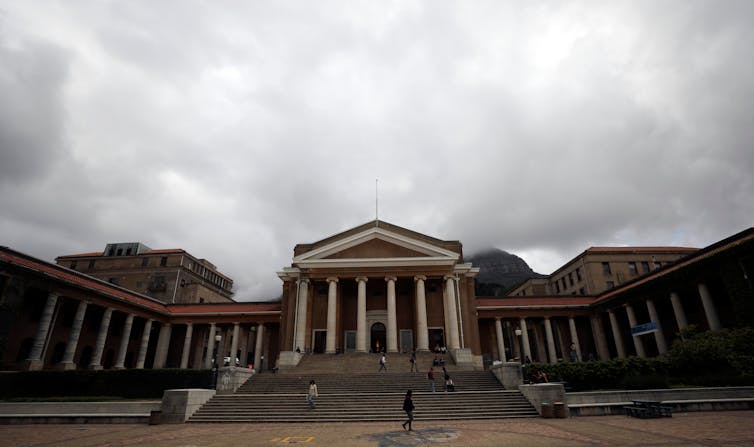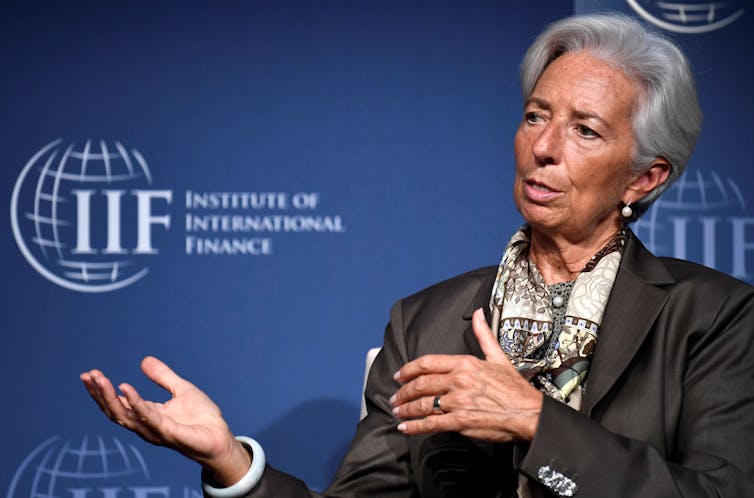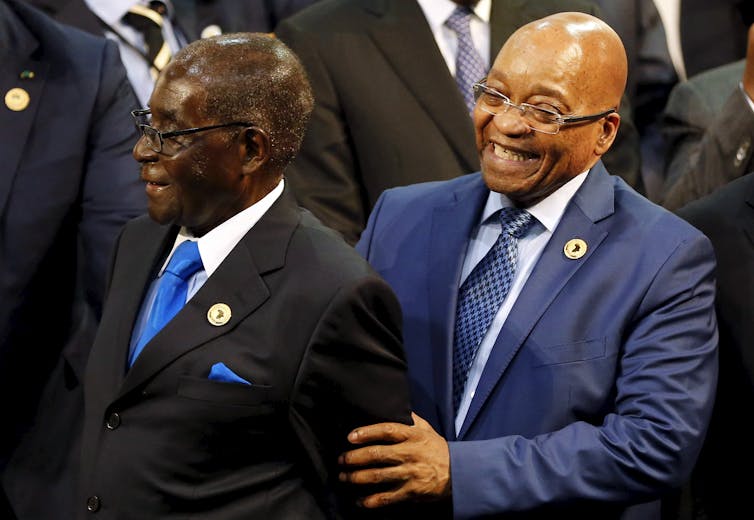
Students from Wits University, in Johannesburg, during a protest for free education.
EPA/Kim Ludbrook
In a society like South Africa in which one racial group has dominated another, poor people are ignored in economic debates by those who claim to speak for them.
Take the calls for free higher education which featured prominently in student protests over the past two to three years. They are back in the limelight because President Jacob Zuma’s desire to spend billions on providing free tertiary education has prompted a public controversy in which he was accused of wanting to bankrupt the Treasury for political gain. Although it later became clear that Zuma only wanted to pay for students whose household incomes were below R350 000 a year, the reports revived interest in the free education demand.
Outsiders might find something curious about the higher education fees debate in South Africa. The demand that no-one should pay is an article of faith among people who occupy the left in the country. The view that the well-off should continue to pay so that the poor are funded is seen as a sign of conservatism. Elsewhere in the world, it is the left which wants the rich to pay for services to the poor.
This is no isolated case in South Africa. Another example is electronic tolling (e tolls) in the country’s economic heartland, Gauteng. Vehicle owners, including companies, pay the toll. People who use busses and minibus taxis, the vehicles of the poor, don’t. Anyone suggesting that it’s fair to expect people who own trucks and busses to pay for roads on which poor people can ride for free is likely to be dismissed as a right-wing zealot.
How did the interests of wealthy students and their families, or the owners of vehicles, become those of the left and social justice campaigners? Around the world, the views of well-off groups are often presented as those of everyone. The South African oddity is that those who in other societies would be arguing against free passes for the affluent, argue for them.
To see why, we must look at the history of the campaign against minority rule, which I discussed in a book on radical thought.
Economic inequality versus race
The first campaigners for economic change in South Africa were socialists and trade unionists who immigrated from Britain. They took the standard left view of the time – racial divisions were created by bosses and other fat cats who hoped to hang onto their privilege by dividing the workers. Because both black and white workers were exploited, they argued, they could and should unite against their common enemy, economic exploitation.
Within a few years, the view that economic inequality mattered more than race was killed by striking white miners who, in 1922, added to a banner reading “Workers of the World Unite” the words and fight for a white South Africa’.
Competition for jobs from black workers was one reason the miners gave for the strike. For the next seven decades, white workers made it clear that the privileges which their whiteness offered were more important to them than their supposed common interest with black workers.
The view that race was more important than economic inequality was shared by those who fought against apartheid. Although left-wing activists, particularly in the South African Communist Party, were active in the African National Congress, they gave up early on the idea that race could take a back seat to the fight for economic change.
Racial equality versus private ownership
In the late 1920s, the Communist International, to which the communist party belonged, adopted the theory of “national democratic revolution”. It committed communists to fight against colonialism and racial domination in colonised countries – the battle against capitalism could wait.
In South Africa, this “revolution” which even today is seen by some on the right as a call to destroy the market economy, was always about fighting for racial equality, not abolishing private ownership. Those who complain that the ANC has not delivered on this “revolution” are saying it has not done enough to end white control of the economy, not control by private owners.
While the ANC often used left rhetoric, black intellectuals and activists, including those in the South African Communist Party, reminded white colleagues who wanted to emphasise economic inequalities that racial inequality was more important.
This view was shared by movements to the ANC’s left. Instead of denouncing it for fixating on race rather than economic divisions, they argued that apartheid was a form of “racial capitalism” in which racial and economic exploitation was so intertwined that one could not survive without the other. While this meant that they could fight against racism while claiming they were fighting for socialism, it made race the central issue.
The enemy was white minority rule
The South African left may have read different books and chanted different slogans, but it endorsed the mainstream view that the key issue was racial inequality. Left-wingers earned their credentials by fighting harder against racial minority rule, not by fighting for economic equality – and they found no shortage of left-wing theories and slogans to justify this.
This history has shaped thinking, ensuring that there has never been a strong lobby, or an influential body of opinion, stressing the interests of the poor. If the problem is racial domination, it follows that economic differences within racial groups matter less, if at all. And so, it seems natural to demand changes which would benefit the rich by lumping them with the poor.
Since this prompts people to endorse policies which are biased against the poor, this analysis might seem to be a warning against racial thinking on the economy. It is not. The reason why race has always mattered more than economic inequality is that it is more important: black scholars and activists who emphasise race do so because this squares with their experience not only under apartheid, but now.
The point is illustrated, again, by the student protests demanding free higher education. A careful look shows that they are essentially about race – the protesters are rebelling against what they see as a failure of higher education institutions to take them seriously.
Two decades ago, the left-wing scholar Harold Wolpe– who started his academic career trying to convince the ANC and South African Communist Party that apartheid was simply a product of capitalism but who changed his position when he recognised how important race is in South Africa – wrote a paper on higher education change. He argued that historically white universities were expecting black students to change to fit into their culture rather than changing to meet the needs of new students as the racial make-up of their student bodies changed. It’s this failure to accommodate black student needs which prompted the student slogan “Fees Must Fall”.
Steven Friedman, Professor of Political Studies, University of Johannesburg
This article was originally published on The Conversation.



